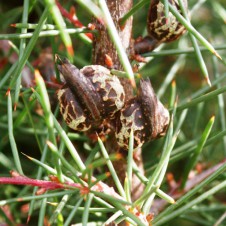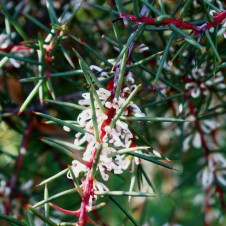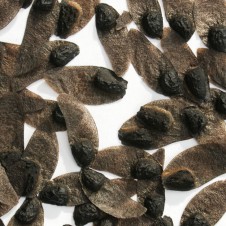General Description: A shrub or small tree, to 4 m tall, with stiff, crowded, needle-like leaves and clusters of white, sweetly perfumed tubular flowers.
Flowers and Fruit: White and pink tubular flowers to 7 mm long from May to September. Fruit is a more or less round, warty and wrinkled, woody capsule with a short, beak-like tip. Seeds are flat with translucent wings.
Notes: Recorded as H. sericea for many years but that species is now regarded as a native of NSW and occurs only as an occasional garden escapee in Victoria.
Site Preference and Tolerances: Mostly in hill country in heathlands and scrubby understoreys of open forests. Soil preference is for well drained sandy and stony soils. Drought and frost tolerant, prefers full sun and dry to moist soils.
Life Span: Short-lived (less than 20 years)
Wildlife Value: Attracts nectar-feeding birds and insects. Provides excellent cover and nesting sites for birds due to its dense, very prickly foliage, especially when planted in clumps.
Other Values and Uses: Very adaptable hardy shrub which requires little attention and is drought tolerant. A long flowering period and attractive, perfumed flowers make this a useful species. It is also suitable for erosion control on hillsides, plains and drier sites. New growth of this plant is red which contrasts beautifully with the bright green spines and looks lovely with the pink and white flowers.
Other Scientific Names: Hakea tenuifolia var. decurrens, Hakea sericea sensu Willis p.p.
Other Common Names: Needle Bush, Needle-bush, Needlebush, Silky Hakea
Germination Information: No treatment required, should have good results in one to two months.



